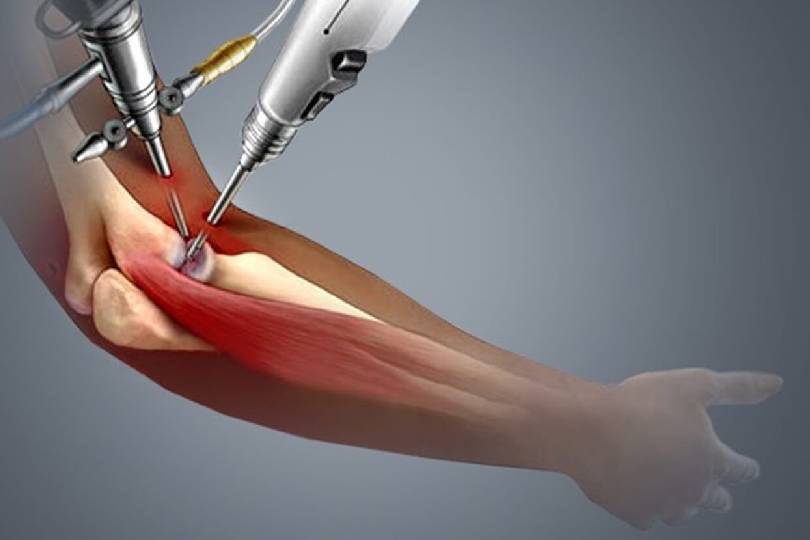Elbow Replacement Surgery

Introduction:
Elbow replacement surgery, also known as total elbow arthroplasty, is a procedure designed to alleviate pain and restore function to severely damaged elbows. Just like hip or knee replacements, elbow replacement surgery aims to improve the quality of life for individuals experiencing debilitating elbow conditions. In this guide, we will explore the reasons for undergoing elbow replacement surgery, the procedure itself, the recovery process, and what to expect post-surgery.
Understanding the Elbow:
Before delving into elbow replacement surgery, it’s essential to understand the anatomy and function of the elbow joint. The elbow is a complex joint that allows for the bending and straightening of the arm, as well as rotating the forearm. It is composed of three bones: the humerus (upper arm bone), the ulna, and the radius (forearm bones). These bones are connected by ligaments and surrounded by muscles that enable movement and stability.
Reasons for Elbow Replacement Surgery:
Elbow replacement surgery becomes necessary when the elbow joint is severely damaged due to conditions such as osteoarthritis, rheumatoid arthritis, traumatic injuries, or failed previous surgeries. These conditions can cause chronic pain, stiffness, swelling, and limited mobility, significantly impacting daily activities and quality of life.
Candidates for Elbow Replacement:
Not everyone with elbow problems requires replacement surgery. Candidates for elbow replacement surgery typically have tried conservative treatments like medication, physical therapy, and injections without significant improvement. Candidates are generally individuals with severe arthritis, significant joint deformity, or fractures that cannot be effectively treated with other methods.
The Elbow Replacement Procedure:
Elbow replacement surgery is performed under general anesthesia, meaning you will be asleep and pain-free during the procedure. The surgery typically takes a few hours, during which the surgeon makes an incision over the elbow to access the joint.
Once the joint is exposed, the damaged parts of the bones are removed and replaced with artificial components made of metal and plastic. These components mimic the natural movement and function of the elbow joint. The surgeon then reattaches muscles and closes the incision.
Recovery Process:
After surgery, you will spend some time in the hospital for observation and pain management. Physical therapy is an essential part of the recovery process and usually begins soon after surgery. A physical therapist will guide you through exercises to regain strength, flexibility, and range of motion in your elbow.
Recovery time varies from person to person, but most individuals can expect to gradually resume normal activities within a few months. It’s important to follow your surgeon’s and physical therapist’s instructions carefully to ensure a smooth recovery and optimal outcome.
Risks and Complications:
Like any surgery, elbow replacement surgery carries risks and potential complications. These may include infection, blood clots, nerve damage, stiffness, loosening or dislocation of the implant, and allergic reactions to anesthesia or implant materials. However, the majority of patients experience significant improvement in pain and function following elbow replacement surgery.
Long-Term Outlook:
For many individuals, elbow replacement surgery provides long-term relief from pain and restores functionality to the joint. However, the lifespan of elbow implants varies, and some may require revision surgery in the future. It’s essential to maintain a healthy lifestyle, follow-up with your healthcare provider regularly, and avoid activities that may put excessive stress on the elbow joint to maximize the lifespan of the implant.
Conclusion:
Elbow replacement surgery is a valuable option for individuals suffering from severe elbow conditions that impact their quality of life. By understanding the reasons for the surgery, the procedure itself, and the recovery process, individuals can make informed decisions about their treatment options. While elbow replacement surgery is not without risks, many people experience significant improvement in pain and function, allowing them to return to the activities they enjoy. If you’re considering elbow replacement surgery, consult with a qualified orthopedic surgeon to discuss your options and develop a treatment plan tailored to your needs.
